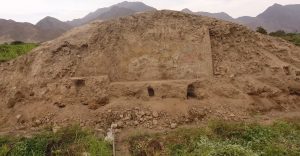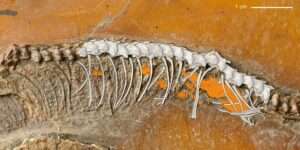Story By: Juan Fenandez Mayes, Sub-Editor: Joseph Golder, Agency: Newsflash
These are the remains archaeologists have found after discovering a chapel that was built by the former Spanish conquistador Hernan Cortes.
Cortes was a Spanish conquest to door whose expedition led to the collapse of the Aztec Empire bringing much of what is now modern day Mexico under the rule of the King of Castile in the early 16th century.
He had headed off to the New World to seek wealth and led an army that captured the Aztec capital of Tenochtitlan which was renamed Mexico City and where the church that has now been found was later built.

The chapel was discovered during restoration work being carried out by the National Institute of History and Anthropology (INAH) archaeologists Juan Cervantes Rosado, Maria de la Luz Moreno Cabrera and Alejandro Meraz Moreno.
They were conducting the work on the Square and Church of the Immaculate Conception, known simply as ‘La Conchita’ church, located in the Coyoacan municipality in the Mexican capital city of Mexico City between 2012 and 2014.
The area is considered to be the first Spanish settlement after Tenochtitlan (the ancient capital city of the Aztecs) was taken by Cortes who ordered for the chapel to be built in 1524.

The archaeologists noticed an elevation in the land and the presence of an archaeological structure which first lead them to believe that there could be something underneath.
According to a report by INAH, experts were able to “corroborate the place where the church was built” was occupied by ancient groups since the year 650 A.D” and had structures built on top of others after conducting 15 digs.
Cervantes said: “We could have a first construction from the 16th century of which there is no evidence except a few burials that may have been associated with it.

“On a second instance, we found the floors of another structure with a level similar to the open chapel from the end of the 17th century or the beginning of the 18th century that also had burials, on top of which, is the church we see today” referring to La Conchita.
The burial sites of 500 people were found of which about “80 percent” is thought to be deaths from old age. Also discovered were 100 complete containers and fragments of pots, vases, and bowls.
Palynological analysis showed the bowls had traces of different plants, nuts and other vegetation. Experts presume they were used for “offerings” or “ritualistic purposes”.

The bowls are thought to have been donations for the construction of the structure which is presumed to have been made by one or several regional artists.
Experts also found traces of use on some of the pieces used to build the structure which lead them to believe natives also donated to the project which “allows to infer a prolonged relationship between the community” and the settlers.
The La Conchita church was closed down for several years due to restorations, however, it is unclear if it has opened to visitors yet.
The ViralTab page is created by and dedicated to professional, independent freelance journalists. It is a place for us to showcase our work. When our news is sold to our media partners, we will include the link here.



